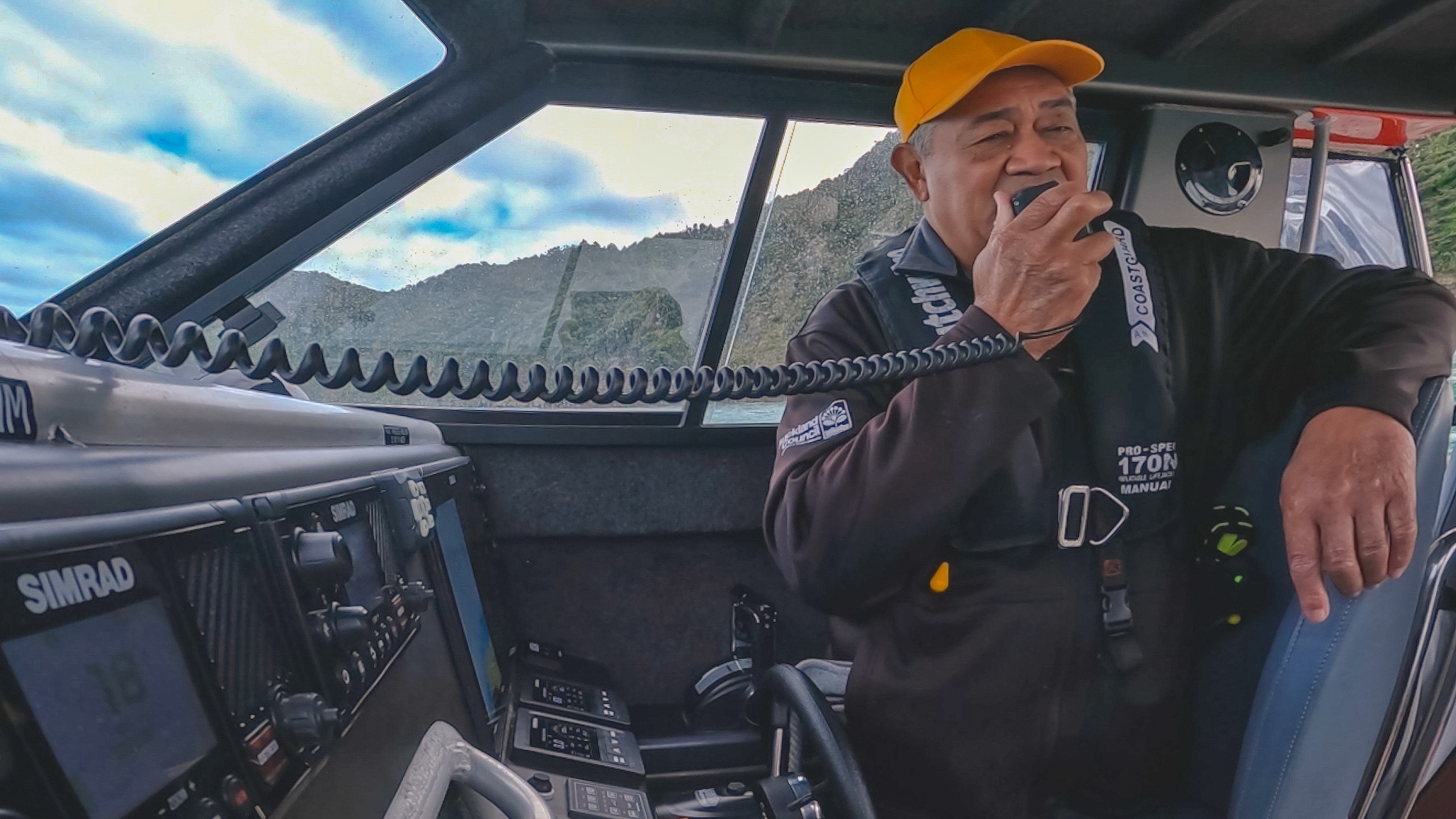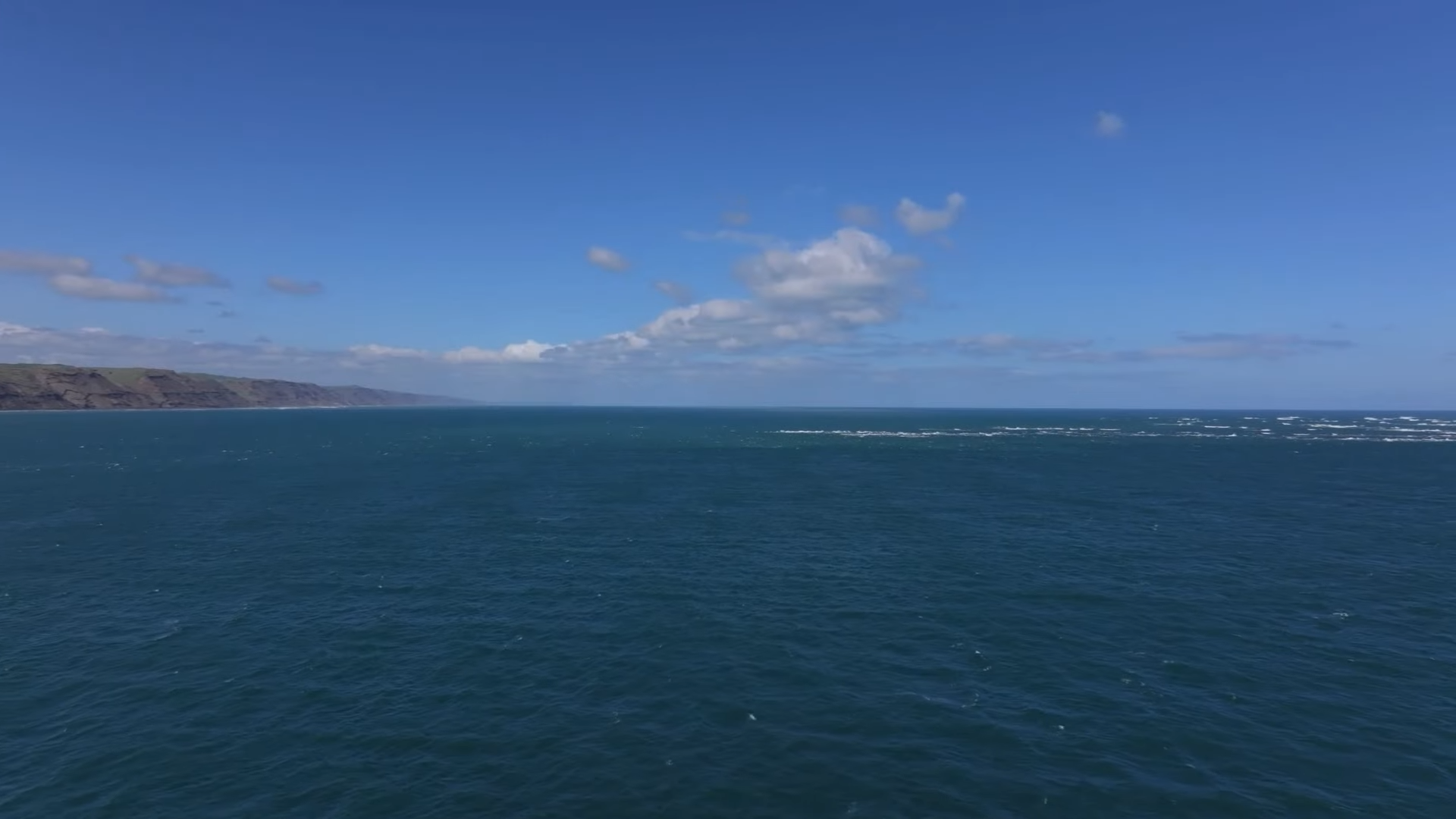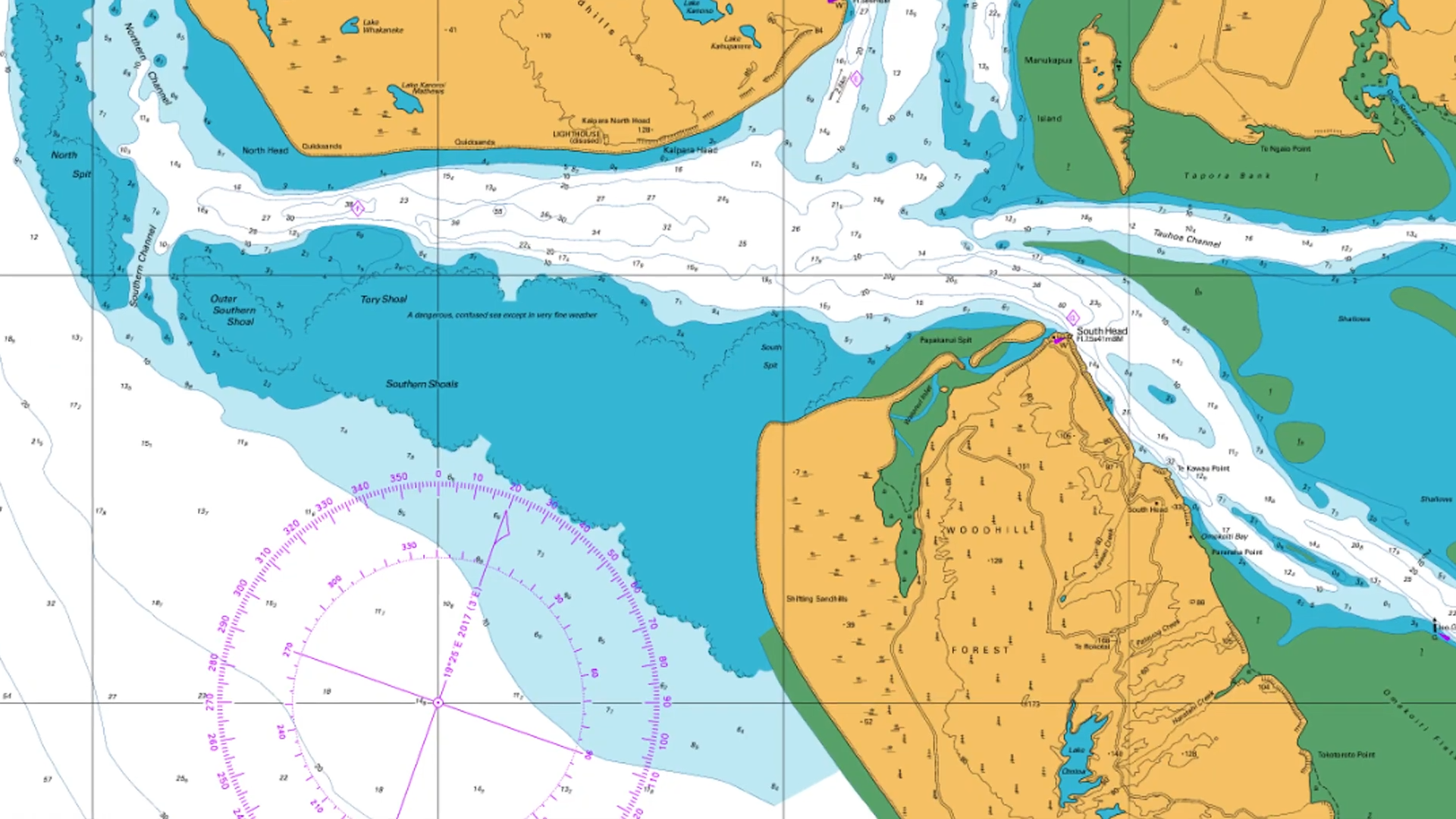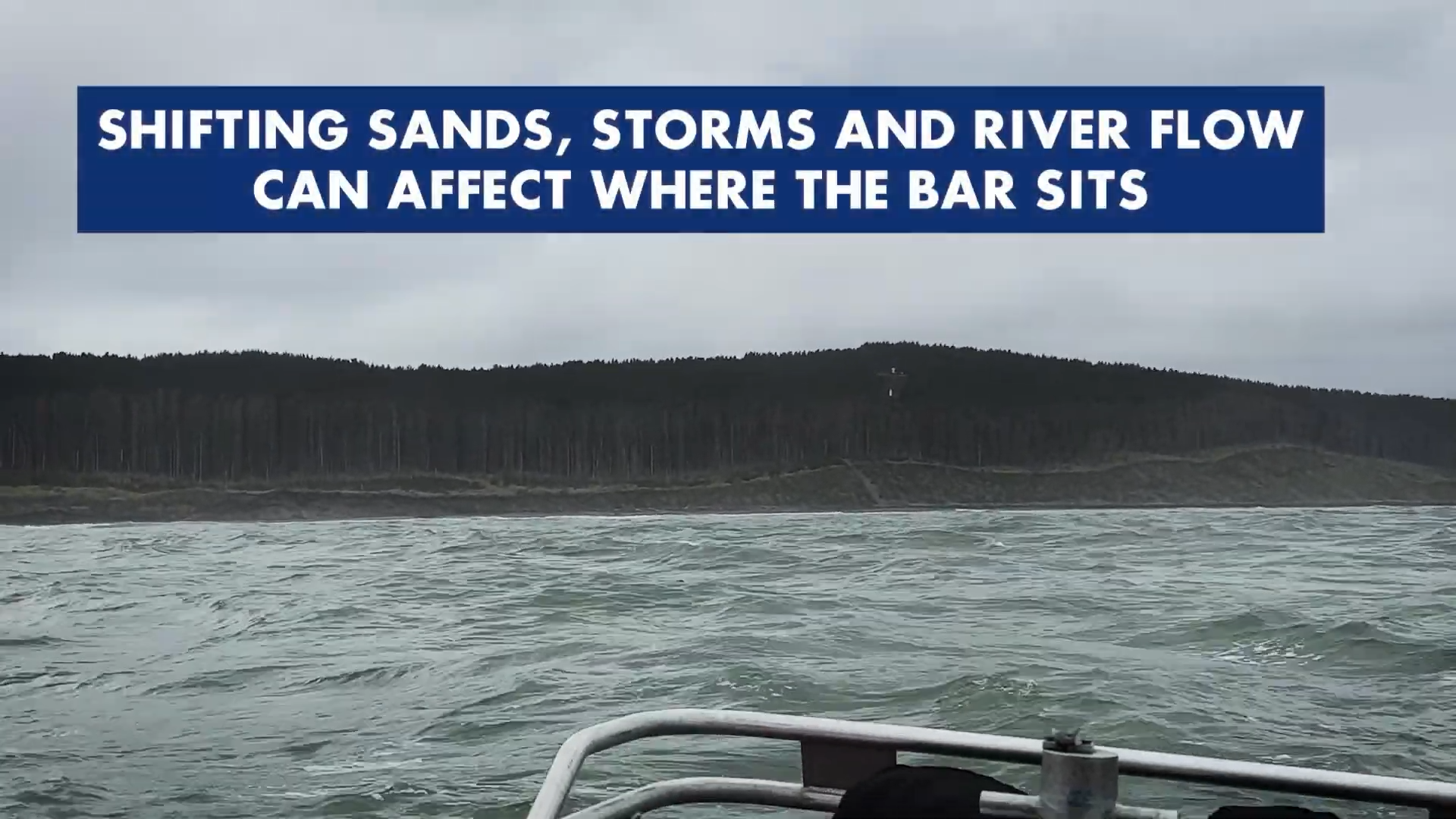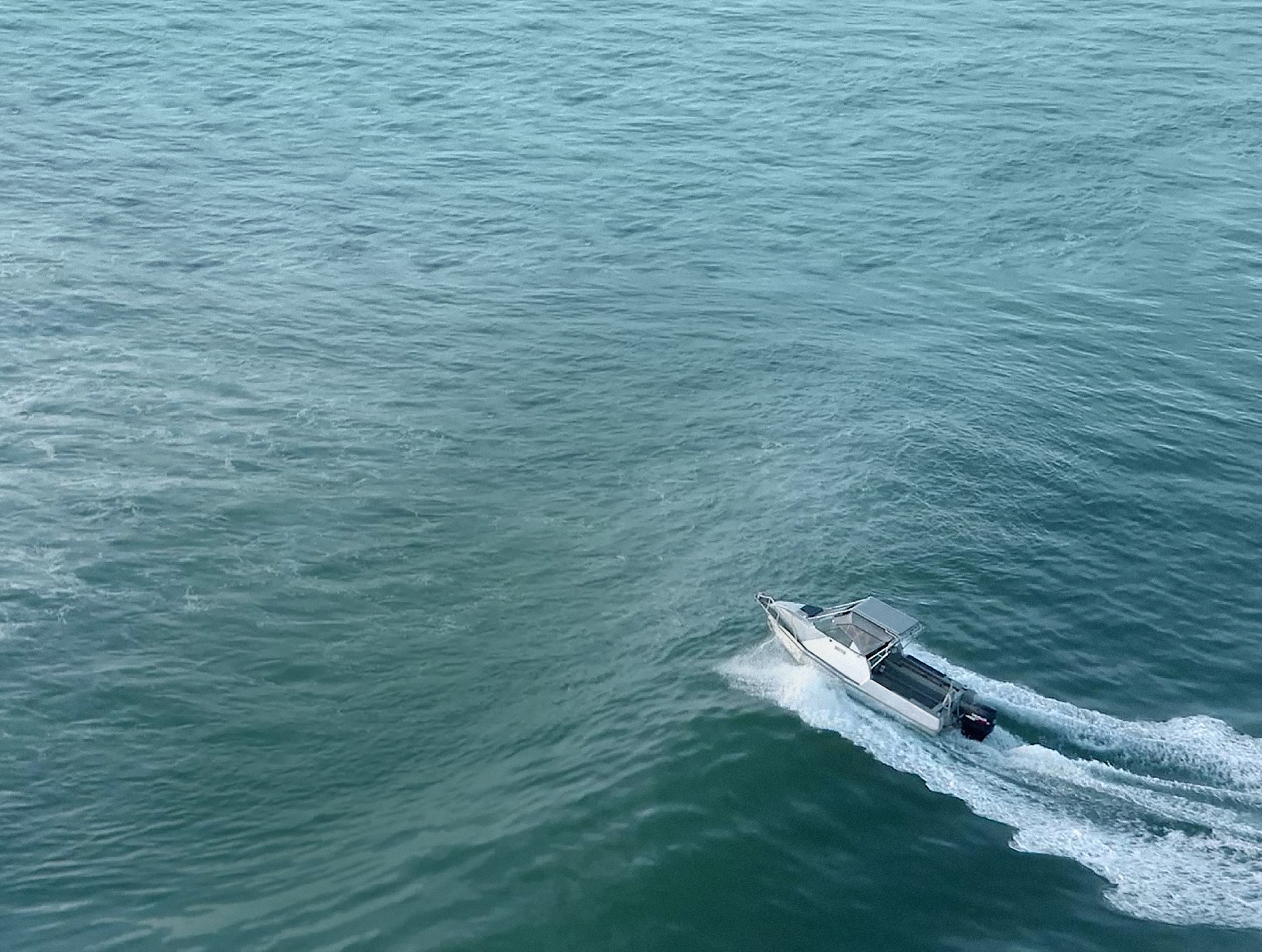
Some of the best fishing can be found outside the confines of a harbour. But crossing any harbour or river bar – whether it’s at the Kaipara, Bowentown, Mana or Greymouth - can be a dangerous experience. Many experienced boaties have got into difficulty crossing a bar and each year, boats are damaged and people are killed or injured when attempts to navigate bar crossings go wrong.
Join us on the Bar Awareness Roadshow as we conduct over 30 free seminars from the far north to the deep south of Aotearoa New Zealand. Our mission is to equip boaties with the essential knowledge and skills they need before they cross a bar. We are tapping into the expertise of local legends, experienced Coastguard volunteers, and supportive community groups.
Check out our schedule here to find a seminar near you!
All you need to know about crossing a bar
-
What is a bar and why are they dangerous?
A bar is a build-up of sand, silt, and mud under the water at the entrance to a harbour or river. It happens because of the sediment carried by rivers or waves.
Bars are dangerous because they make the water shallower, causing waves to become bigger and more unpredictable. This makes crossing them in a boat very risky, as the powerful waves can be hard to navigate and can lead to accidents. Even large ships can be affected by these dangerous conditions.
-
Local knowledge - watch these videos to know how to cross specific bars
We've published three videos focusing on some of our most challenging bars to cross. Our goal is to expand this collection in the future to offer more detailed information on bars across Aotearoa.
Check out a suite of our bar awareness videos with captions translated into seven languages to support our diverse communities.
-
What to do before heading out?
Check in with the Locals
Touch base with your local Coastguard unit, fishing, or boating club to get tips on the best way to navigate the bar and any local markers to watch out for. If you can, go out with an experienced local on a calm day to get a feel for the area.
Take a Bar Awareness Seminar
Sign up for a free Bar Awareness Seminar with us to get the skills, knowledge, and confidence to make good decisions about the weather to cross a bar. The seminars cover critical topics, including understanding bar-specific hazards, assessing the impact of weather and tides, and implementing emergency procedures if trouble occurs.Give Your Boat a Thorough Check
Make sure your boat is ready for the crossing. Check the engines, hull, and communication gear. Practice tight turns in calm water to ensure the steering is responsive.Ensure Your Boat is Up for the Crossing
Different bars have different requirements, so check with your local Coastguard unit or fellow boaties for specific advice. For instance, the Manukau bar needs a boat that can handle at least 20 knots and is at least 5.5 meters long. The Kaipara bar requires a boat to be a minimum of five meters long with a 90-horsepower outboard.Check the Tides and Weather
Plan your trip around the tides and weather to make sure conditions are good for both going out and coming back. -
What to do before you cross the bar?
Observe the Bar
Keep an eye on the bar and watch how the waves are behaving. If it looks rough, don’t attempt to cross - stay in the harbour instead. If you need to head out, consider waiting for better conditions, like high tide when the water over the bar is higher and the tidal flow is lower. Or, talk to us for advice. Avoid crossing just because you feel you need to get home; that’s asking for trouble.Secure Everything
Make sure all hatches are closed and any loose equipment is stowed away. You don’t want an anchor or other gear moving around while you’re focusing on crossing.Brief Your Crew
Have everyone stay in the centre of the boat to maintain stability. Assign one person to watch for trailing waves that might swamp the back of the boat.Wear Lifejackets
Lifejackets must be worn by everyone. If something goes wrong, you won’t have time to put one on, so make sure everyone has theirs on at all times.Make a Bar Crossing Report
Contact us via your local VHF radio channel or dial *500 on your cellphone. Let us know where and when you’re crossing. We’ll keep an eye on you, and if you don’t close your report within 15-30 minutes, we’ll start a search. Find more about making a Bar Crossing Report in the FAQs below.Have Your VHF and PLB Ready
Keep waterproof handheld radios and PLBs easily accessible. If you’re using an EPIRB, it’s best to have it out of its bracket and in a grab bag held by a crew member. -
What is a Bar Crossing Report?
A Bar Crossing Report is logged with Coastguard Radio when a boat is crossing one of NZ's many challenging harbour or river bars. Unlike a Trip Report, a Bar Crossing Report must be closed once you have safely crossed the bar. When you make a Bar Crossing Report, you'll be put on a SAR (search-and-rescue) watch of anywhere between 10 and 30 minutes, depending on which bar you're crossing.
Remember you MUST close your Bar Crossing Report once you're safely over the boat. If we haven't heard from you then, and if attempts to contact you or your shore contacts on a known number fail, search and rescue procedures will be initiated. -
How do I log a Bar Crossing report with Coastguard Radio?
To log a Bar Crossing Report, tune your marine radio to your local Coastguard Radio station or call us on *500 from your mobile. Simply tell us:
1. The name and VHF Callsign of your boat.
2. Which bar you're crossing (including whether you're heading in or out over the bar).
3. Your current location
4. Destination, route, and estimated time of arrival (ETA).
5. Number of people on board (POB).
The Coastguard Radio team will put you on a SAR (search and rescue) watch of between 10 and 30 minutes, depending on which bar you're crossing. You MUST close your Bar Crossing Report when you're safely over, otherwise a search may be initiated for you.
And don't forget to make a separate Bar Crossing Report for when you're headed back over the bar, at the end of your day. -
Can I log a Bar Crossing Report on the Coastguard app?
Unfortunately, you can't use the Coastguard app to log a Bar Crossing Report. Because bar crossings are dangerous, they're better planned in person. Contact Coastguard Radio on your local VHF channel, or phone us on *500 from your mobile.
-
Do I need a callsign or VHF certificate to log a Bar Crossing report?
You sure do! If you’re using a VHF for anything but an emergency transmission you need your VHF Radio Operators Certificate, and since all radio transmissions have to be individually identifiable you also need a callsign.
The VHF certificate is easy to do online or in the classroom, and you can get a callsign online in a couple of minutes.
-
Other useful tips
Don’t Rush, Be Safe
Take your time when crossing the bar. Move slowly and cautiously, watching the waves to find a good opening. Once you find a safe spot to cross, commit to it. Turning back can be dangerous and might lead to getting swamped.Keep the Bow Facing the Waves
Always keep the bow of your boat pointed directly into the waves, with the bow trimmed up. Throttle back as you crest each wave to avoid getting too much air on the other side, then brace for the next set of waves.Watch Your Rear
Have a crew member keep an eye on the waves behind you. If a wave starts catching up, don’t panic - just speed up a bit to stay ahead of it.Close Your Bar Crossing Report
Once you’ve safely crossed the bar, remember to close your Bar Crossing Report with us.
